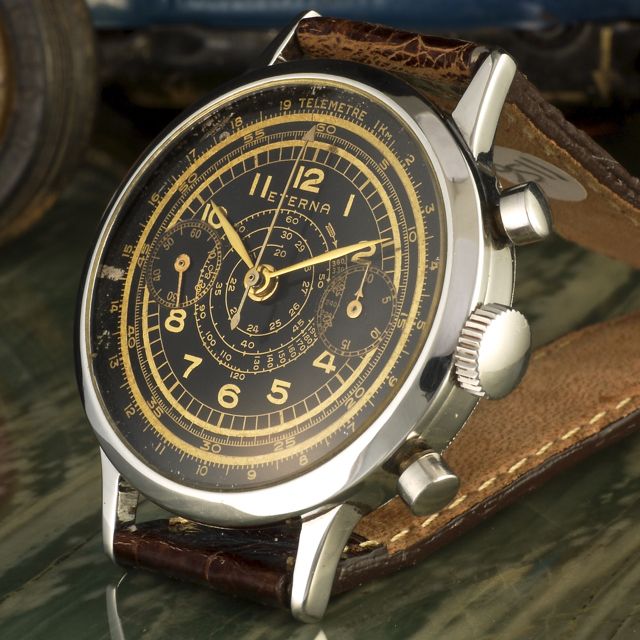
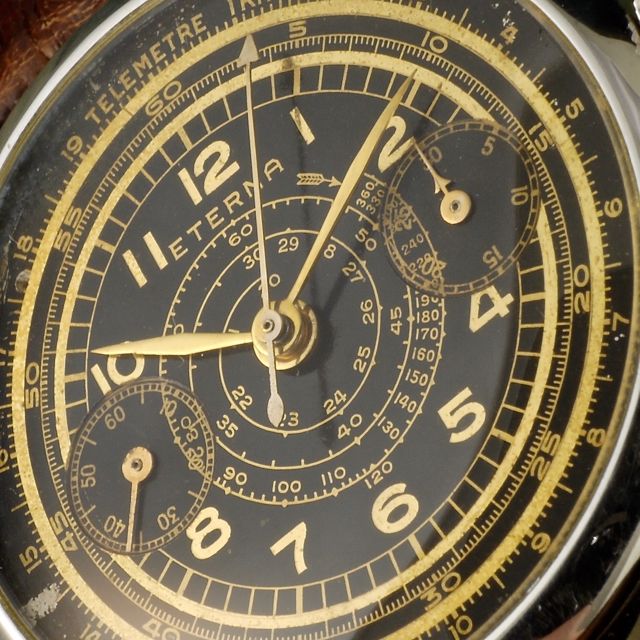
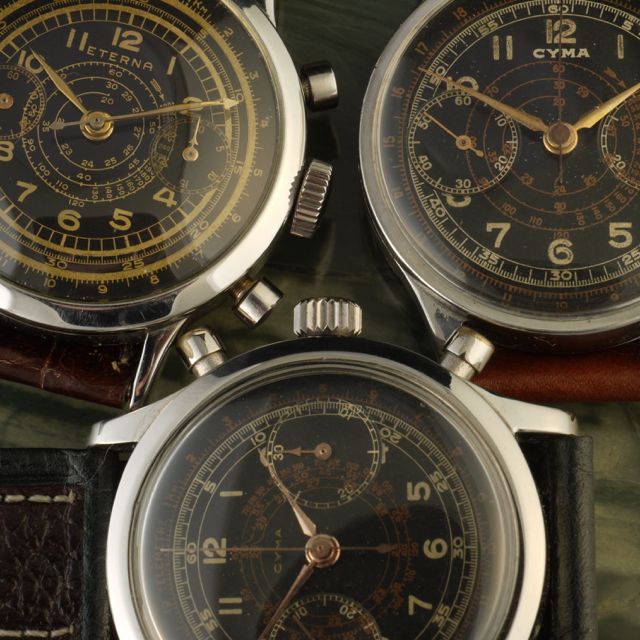
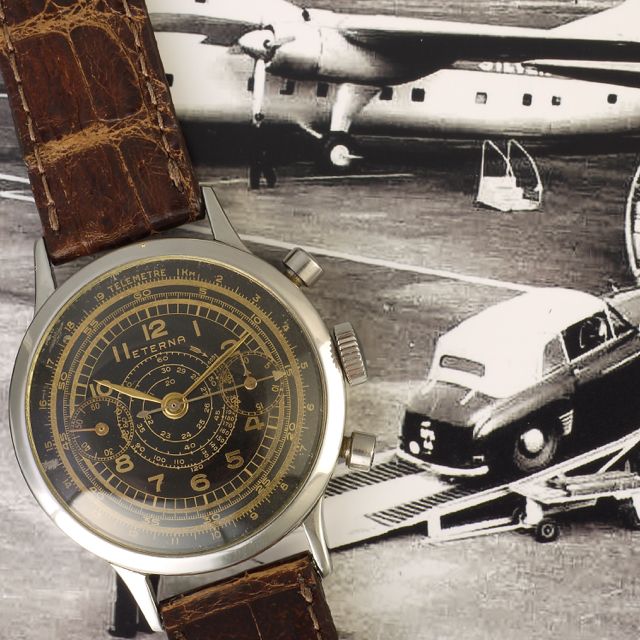
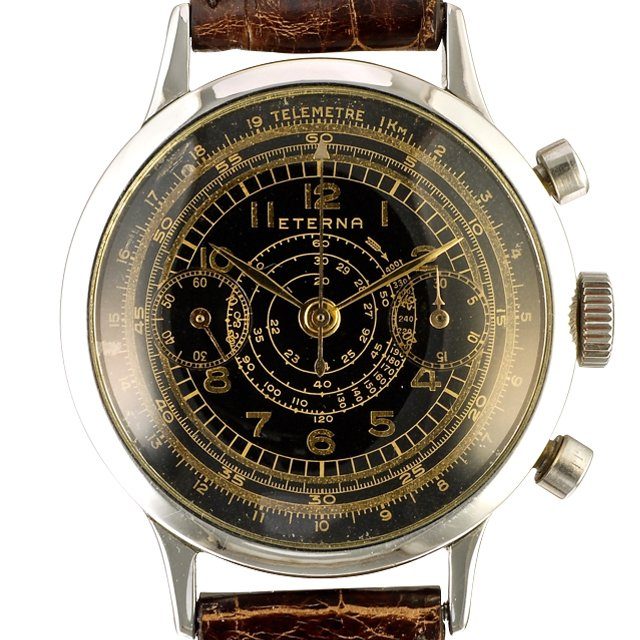
Eterna Tachy-Telemeter
Col. David C. Schilling (USAF) makes the first nonstop transatlantic jet1950 Eterna Cronograph Tachymeter Telemeter, 37mm. case.
In the 1900s, wristwatches were just starting to become fashionable. Schild Freres started to produce lady’s wristwatches adapted from small pocket watches. In 1905, the company changed their name to Eterna. The company continued to be at the leading edge of watch development, and in 1908 it patented the first alarm wristwatch. In 1948, Eterna advanced self-winding watch technology with the development of the Eterna-matic automatic movement. The use of five strategically placed ball bearings made the movement very efficient with significantly reduced friction and resistance on the oscillating weight that wound the mainspring. This reduced the wear and tear on internal parts, increasing the watches accuracy and its useful life. Its popularity was such that in 1948 Eterna adopted the image of five ball bearings as its corporate logo.
By the 1940s the demand for chronographs had increased dramatically. The use of chronographs was now not only for military and scientific purposes, but also very importantly for use in motor sports.
A tachymeter scale measures how fast an object is moving. The scale can be found either on the dial or in the bezel. Most tachymeters start at 400 and end at 60, but some models can show different numbers. Its very simple to calculate the speed: just mark a point and push the start button. After the object has moved for one kilometer (or mile), push the stop button. The number indicated by the hand shows the speed of the object in km/h or mph, depending on the unit chosen.
A telemeter scale measures the distance between the user of the watch and the event seen and heard. It was used extensively to calculate when artillery fired. When you saw the light of the shot of the artillery, you would push the start button and push the stop button when the thunder was heard. The number shown in the scale refers to the distance.
